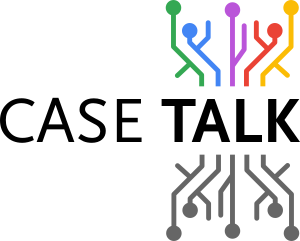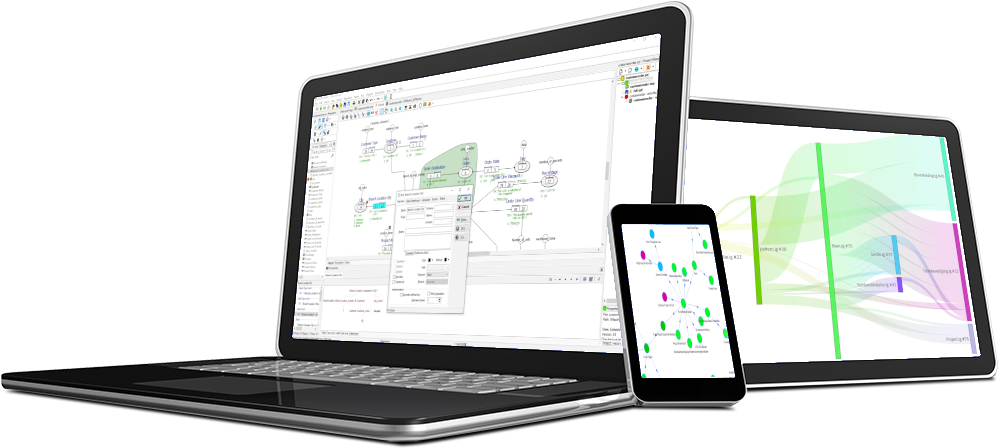Seeing Beyond the Thousand-Word Picture: Why Fact-Oriented Modeling Challenges Traditional Data Architecture
"A picture says more than a thousand words" may be true, but in data modeling, that picture often obscures more than it reveals. A comprehensive presentation on Fully Communication Oriented Information Modeling (FCOIM) at DAMA South Africa demonstrates why the industry's reliance on visual diagrams creates a fundamental disconnect between business reality and technical implementation.
The Lost Translation Problem
Modern organizations face a persistent challenge: business experts need IT systems, but the translation process from business needs to technical artifacts introduces systematic distortion. The traditional approach follows a familiar pattern: business stakeholders describe their work, IT specialists create diagrams based on their interpretation, and these pictures become specifications for system implementation.
This process works until it doesn't. As one presenter noted, "We created this new problem called BI because now we need management reports covering all systems in the organization, but we kind of lost track what was in every source system in the first place."
The root issue isn't technical complexity—it's the degradation of business meaning through multiple layers of abstraction and interpretation.
Marco showed us how to record business facts and use these facts to create all sorts of data models used for communication.
One of the significant benefits of the model is the presentation of business recorded facts that explain and communicate the existence of relationships between the business concepts.
In ERD models, I would write them out in excel and get business experts to agree that I had captured the business rules correctly.
Using the Fact-Oriented Modelling approach, the business facts expressed by the business are part of the model and explain the business concepts and their relationships with other concepts.
It certainly makes the model more understandable and improves our communication.
Time well spent! Be careful to ignore the minor enhancements that can improve understanding and communication.
Why Pictures Fail to Communicate
Technical diagrams like UML class models, entity-relationship diagrams, and logical schemas serve specific audiences well, but they fail catastrophically when used for business communication. The presentation reveals a striking observation: "We created something that's rather complicated like UML class diagrams... but none of that really communicates with non-IT staff."
This creates a validation problem. How can business stakeholders verify that technical implementations actually serve their needs when the artifacts used for specification are incomprehensible to them? The answer typically involves additional documentation, business glossaries, and translation layers—all of which introduce further opportunities for communication breakdown.
## The Concrete Example Advantage
FCOIM addresses these challenges by starting with concrete fact statements rather than abstract type-level descriptions. Instead of saying "employee performs checkup on patient," the methodology requires specific examples: "Employee 465 performs a checkup for patient 123499 on 12/10/2019 at 4 o'clock."
This specificity serves several purposes. Concrete examples eliminate the ambiguity that plagues abstract discussions—no more debates about whether someone is an employee, consultant, or contractor when you're discussing Employee 465 specifically. The examples also provide immediate validation material that business experts can verify without technical training.
Building from Communication Up
The methodology's strength lies in its systematic approach to preserving business communication through technical transformation. Each fact statement undergoes grammatical analysis similar to elementary school language exercises—identifying subjects, objects, and relationships—but maintains traceability back to the original business context.
This produces rich information models that can generate multiple technical artifacts: relational database schemas, UML class diagrams, XML schemas, JSON API specifications, and even specialized formats like Data Vault structures. Crucially, each generated artifact includes the original business language and examples, creating a bridge between technical implementation and business understanding.
Constraint Discovery Through Examples
One of the methodology's most powerful features addresses a common modeling challenge: discovering business rules and constraints. Rather than asking abstract questions about business policies, FCOIM presents concrete scenarios derived from actual examples.
For instance, when modeling medical checkups, the system might present: "Employee 465 performs checkups on two different patients at different times. Can this occur?" The business expert's answer directly drives the resulting data model structure—determining whether relationships are one-to-one, one-to-many, or many-to-many.
This example-driven approach ensures that business constraints are captured accurately rather than assumed by technical teams.
Model-to-Model Transformation Pipeline
The presentation demonstrates a sophisticated transformation pipeline from communication-based information models to technical implementations. The process involves three key steps:
Grouping: Combining related information elements based on business communication patterns rather than technical optimization criteria.
Lexicalization: Ensuring that all elements terminate in concrete data types suitable for technical implementation while preserving business terminology.
Reduction: Eliminating redundant elements that emerge during the transformation process without losing essential business meaning.
These transformations maintain complete traceability—every element in the final technical artifact can be traced back to specific business statements, complete with examples and context.
Real-World Impact: The Dutch Railways Case
The methodology's practical value emerges clearly in its application to complex operational environments. The Dutch Railways implementation demonstrates the approach's potential for large-scale system integration.
Previously, railway infrastructure disturbances required four hours of inter-departmental communication before maintenance teams could be deployed. Through fact-oriented information modeling, the organization built an integrated information architecture that reduced this response time to seconds.
The system now automatically coordinates across multiple domains: taking systems offline, rerouting trains, changing signals, notifying staff, and managing electrical systems—all triggered by drawing a circle on a map around the incident area.
This wasn't achieved through better algorithms or faster computers, but through systematic preservation of business communication patterns across technical implementation.
The Validation Imperative
Traditional modeling approaches struggle with validation because they require business experts to verify technical artifacts they cannot read. FCOIM solves this by maintaining business language throughout the technical pipeline.
Database schemas include the original fact statements as comments. Generated views recreate business language from stored data. Even technical documentation preserves the communication patterns that generated it. This means business stakeholders can validate technical implementations by reading back their own language and examples.
Addressing Complexity at Scale
Critics might argue that such detailed attention to business communication becomes impractical at enterprise scale. However, implementations suggest otherwise. The methodology supports multi-language environments where the same information model generates artifacts in Dutch, English, French, or other languages as needed.
Large organizations use the approach to manage thousands of terms across multiple domains while maintaining governance and traceability. The key insight is that upfront investment in communication clarity pays dividends throughout the system lifecycle.
Integration with Modern Approaches
The methodology aligns well with contemporary trends in data architecture. Its generation capabilities support various target platforms: traditional relational databases, dimensional models for data warehousing, Data Vault structures for enterprise data hubs, and graph representations for knowledge management.
The approach also complements emerging practices like domain-driven design, which seeks to bridge business and technical domains but often lacks systematic methods for capturing and preserving domain knowledge.
The Governance Advantage
From a data governance perspective, FCOIM provides capabilities that traditional approaches struggle to match. Every information element includes metadata about its source: which business expert provided it, when, for what department, and for what purpose.
This creates comprehensive lineage tracking that supports both regulatory compliance and practical system maintenance. When business rules change, organizations can trace the impact through all affected systems and data elements.
Looking Forward
While FCOIM requires significant investment in business expert engagement and systematic process discipline, it addresses fundamental challenges that purely technical approaches cannot solve. The methodology's emphasis on communication preservation provides a foundation for the kind of cross-functional collaboration that modern data initiatives require.
The approach's integration with AI tools and modern development platforms suggests continued relevance as technology evolves. The fundamental insight remains powerful: successful data initiatives must begin not with technical artifacts, but with clear, verified understanding of how businesses actually communicate about their work.
The presentation concludes with a sobering observation about traditional modeling approaches: when presented with technical diagrams, even expert data modelers cannot vouch for their correctness because "we're missing the story—we don't know the story of the business."
FCOIM ensures the story is never lost. In an era where data affects lives in increasingly direct ways, this preservation of business context through technical implementation may be exactly what organizations need to build systems that truly serve human purposes rather than merely processing data efficiently.


